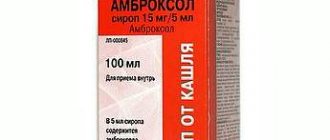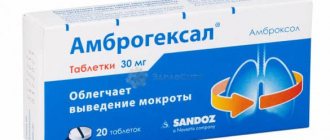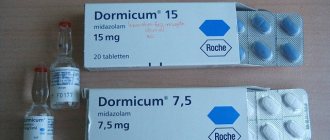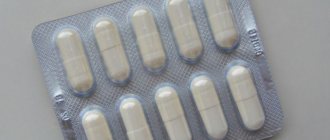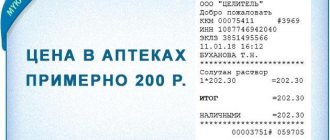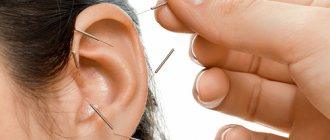Pharmacological properties of the drug Reosorbilact
The medication exhibits a detoxification and anti-shock effect. Its effect is aimed at alkalizing the blood and improving the rheological parameters of the blood. Each component performs its own functions. Sodium takes part in the process of hemostasis. Calcium helps in improving blood clotting and muscle contraction. Reduces the permeability of blood vessel walls. Lactate is an anion of lactic acid. Sorbitol is converted into fructose in the liver, therefore it is a source of energy.
Pharmacodynamics
The drug is used to eliminate acidosis, improve microcirculation, normalize the volume of fluid in the body and reduce intoxication. It is a combined preparation, since it contains an energy carrier, a buffer and balanced components in terms of ionic composition.
Sodium chloride briefly increases blood volume, thereby increasing diuresis. Sorbitol accumulates in the liver in the form of glycogen. Sodium lactate reacts with water and carbon dioxide, causing it to pass through blood vessels. This process leads to an increase in the blood alkaline reserve.
Pharmacokinetics
The active components are quickly excreted from the body along with urine in the form of metabolites. But first they pass through the liver, heart, skeleton and brain.
The effect of the drug is aimed at alkalizing the blood and improving the rheological parameters of the blood.
Who is contraindicated for treatment?
Not all patients are indicated for therapy with Reosorbilact solution. It cannot be used:
- when the acid-base balance shifts towards alkalization;
- with hemorrhage in the brain, acute blockage of blood vessels by a thrombus, insufficiency of the cardiovascular system, third degree arterial hypertension, as well as in cases where large volumes of liquid are harmful.
In case of increased sensitivity to the active components of the drug, it is necessary to refuse treatment with this plasma substitute so as not to cause severe allergic reactions.
What is it used for?
The medication is used in a hospital setting to thin the blood during the development of thrombophlebitis and endarteritis. The combination medicine is used to reduce the symptoms of intoxication:
- for sepsis;
- with the development of burn shock;
- with acute blood loss;
- with exacerbation of hepatitis;
- with damage to blood vessels;
- for infectious diseases;
- for psoriasis.
Prescribed for pathologies that are complicated by inflammatory kidney disease. Used as preparation before diagnostic procedures or surgical treatment.
Reviews
This medication has established itself as an excellent remedy for coping with intoxication of the body, eliminating dehydration and normalizing the electrolyte composition of the blood.
When broken down, the alcohol sorbitol releases a significant amount of energy, which is used to maintain the weakened strength of the patient. In addition, the glycogen formed from it accumulates in the liver, which serves as a kind of source of glucose when there is a shortage of it in the blood. That is why the medicine can be used for parenteral nutrition.
Many patients who have had to deal with treatment with a plasma replacement agent leave positive reviews about the drug "Reosorbilact". However, not all patients are able to determine and track how the solution affected their body, because this drug is often administered for emergency treatment of severe conditions. Only a doctor can determine how effective a plasma replacement drug turned out to be in a given critical situation in combination with other drugs.
When evaluating the Reosorbilact solution, positive reviews are left by patients who were prescribed it as part of combination therapy for psoriasis. In this case, the medicine improved metabolic processes, removed toxins and, together with other medications, helped reduce lesions. Patients notice that after a course of intravenous administration they feel lighter in the body and lose weight.
The medicine helps restore vitality after debilitating diseases. For some patients, one infusion is enough to eliminate severe poisoning.
Use of the drug Reosorbilact
Only intravenous administration of the medication is carried out using a dropper. The solution is administered in a stream or drip. For chronic pathologies, 400 ml of medicine is used. If a shock occurs, the dosage is increased to 600-1000 ml.
In complicated cases, the patient is prescribed 1200-1500 ml per day. In case of acute blood loss, the drug is administered into the body in a large dosage. It is calculated based on body weight: 25 ml of medication per 1 kg.
For pyelonephritis
The medication is prescribed to patients with pyelonephritis to prevent dehydration. After use, an increase in diuresis is observed, thereby removing toxins from the body, and the kidneys continue to work independently as usual. For acute types of the disease, doctors prescribe 800-1000 ml per day. For chronic pyelonephritis, the solution is administered as a prophylaxis in 400 ml doses.
Undesirable consequences of use
Sometimes the administration of the drug "Reosorbilact" (intravenous solution) may cause adverse reactions affecting different parts of the body.
Disturbances in the immune system are manifested by anaphylactic reactions, angioedema and elevated body temperature.
Changes in the functioning of the heart and vascular bed are associated with an increase or decrease in blood pressure, shortness of breath, an increase in heart rate to over 90 beats per minute, and a bluish discoloration of the skin associated with insufficient blood supply in small capillaries.
Neurological disorders characterized by tremor, headache, dizziness, and general weakness are also possible.
Changes can affect the skin and subcutaneous tissue and manifest themselves in the form of rashes, hives, and itching.
Contraindications
The solution cannot be used in all cases. There are a number of contraindications such as:
- cerebral hemorrhage;
- arterial hypertension;
- increased sensitivity to active substances;
- cardiac decompensation.
The drug is not recommended for use in those pathologies that can lead to bleeding. This category of diseases includes hemorrhagic colitis, liver problems and ulcerative lesions of the stomach or intestines.
Features of treatment
During treatment, monitoring of acid-base balance, the level of important ions in the blood, and liver function is necessary.
In case of cholelithiasis or peptic ulcer, hemorrhagic colitis, liver dysfunction, the drug is administered with extreme caution.
Simultaneous use with solutions containing phosphate or carbonate compounds is not allowed.
The solution is not used for diluting other drugs.
special instructions
During treatment, blood electrolytes, liver function and acid-base balance should be monitored. If a patient is diagnosed with diabetes, blood glucose levels should be measured regularly. The medication is used with caution for calculous cholecystitis.
If a patient is diagnosed with diabetes, blood glucose levels should be measured regularly.
Can I take it during pregnancy and lactation?
There are no data on the use of the solution during pregnancy and lactation. Before use, you should consult a doctor and rule out any contraindications.
Use in childhood
Used in pediatric practice according to indications. Children under 6 years of age are prescribed a dosage based on body weight according to the following formula: 10 ml per 1 kilogram of weight.
Children under 12 years of age are prescribed half the dose intended for adults. Adolescents are administered the solution in the volume prescribed in the instructions.
For impaired renal function
Used to treat patients with renal impairment and renal failure. But it is necessary to monitor blood counts.
For liver dysfunction
The solution should be administered with caution to patients with liver disease. Only the doctor selects the dose and duration of treatment.
Solution
With the help of the drug “Reosorbilact”, blood circulation is improved and its total volume is normalized, the fight against poisoning of the body, and the enrichment of organs with the necessary energy. This blood substitute is based on salts of substances important for the body - sodium, calcium, potassium, magnesium - and hexahydric alcohol sorbitol, which makes it possible to easily administer the solution intravenously.
Characteristics of the drug
The drug "Reosorbilakt" is a plasma-substituting and detoxifying agent. Available in the form of an infusion solution for intravenous and jet administration drop by drop. The medicine is packaged in glass bottles of 400 ml and 200 ml or containers of 250 or 500 ml.
The manufacturer of this crystalloid plasma substitute is Ukrainian.
Active components of the solution
The medicine "Reosorbilakt" refers to multicomponent drugs based on natural electrolytes and energy carriers, selected in accordance with the composition of the blood plasma of a healthy person. The amount of substances is specified per 1 liter, indicated in grams. Includes:
- 19 g sodium lactate,
- 6 g sodium chloride,
- 0.1 g of dry calcium chloride,
- 0.3 g potassium chloride,
- 0.2 g dry magnesium chloride
- 60 g of hexahydric alcohol sorbitol.
The instructions also give in millimoles the amount of individual ions of sodium, potassium, calcium, magnesium, acidic chloride residue and lactic acid.
How does the medicine work?
The mechanism of action of the plasma replacement drug is associated with the implementation of the rheological, anti-shock, detoxification, alkalizing functions of the Reosorbilact solution. Instructions for use attribute the main pharmacotherapeutic role to its main components: sorbitol and sodium lactate.
In liver cells, fructose is initially formed from sorbitol molecules, from which glucose is then obtained, and the final product is glycogen. When broken down, one part of sorbitol produces energy for important energy-intensive processes in the body, and from the other part glycogen is synthesized and deposited.
Under the influence of an isotonic sorbitol solution, thrombus formation is reduced, microcirculation and blood passage through tissues are improved.
Sodium lactate performs a slow, without sudden changes in pH, correction of high acidity due to its inclusion in the metabolic processes of substances. Its anions are able to bind hydrogen ions and thereby reduce acidity. Half an hour after intravenous administration of sodium lactate begins to exert its effect on the body.
The main extracellular cation is sodium ion. Its concentration determines the fluid content outside the cells.
With the help of a plasma replacement agent, sodium chloride, toxins are eliminated and the dehydrated cells of the body are re-enriched with water. The introduction of this salt normalizes the level of sodium and chlorine ions, disturbed by various pathological conditions, which restores homeostasis.
Under the influence of calcium ions, the ability of cells and vessel walls to pass various substances is reduced, inflammatory processes are inhibited, and the body's resistance to infectious agents increases due to increased phagocytosis.
The indications for use of the drug "Reosorbilact" are also due to the properties of potassium chloride. They are aimed at restoring water and electrolyte balance, reducing heart rate and myocardial excitability. High doses of the solution slow down the conduction of impulses and the amplitude of contractions of the heart muscle, causing a moderate diuretic effect.
The action of potassium ions is aimed at transmitting impulses to nerve fibers, increasing the level of acetylcholine, and also promotes the production of excitation in the sympathetic section of the autonomic nervous system. Potassium normalizes the contraction of skeletal muscle fibers, eliminates muscular dystrophy and myasthenia.
What does the drug “Reosorbilact” treat, what is it used for?
Due to the multicomponent nature of the solution and the wide functional activity of its components, the medicine is used for various pathological conditions. Monotherapy or complex treatment can be carried out.
The drug “Reosorbilakt” is administered to normalize capillary blood circulation, for which it is used during traumatic, surgical, toxic, hemolytic and burn shock that accompanies acute blood loss and burn diseases.
The solution is also effective for infectious diseases, to eliminate intoxication and exacerbation of chronic hepatitis.
It is used for sepsis, in preparation for surgery or after surgery.
The instructions for use recommend the drug "Reosorbilact" for preventive and therapeutic purposes for blood clots, thrombophlebitis, endarteritis, Raynaud's disease, when it is necessary to improve arterial and venous circulation.
How to use
The medicine is intended for intravenous drip or jet administration. The amount of solution depends on the patient’s condition and can be 400-1500 ml.
The instructions for use recommend using 600 to 1000 ml of the drug "Reosorbilact" during traumatic, burn, postoperative and hemolytic shock. This amount of solution is administered once, and if necessary, repeated administration is possible. They begin to use the jet method, which is eventually replaced by the drip method.
Chronic hepatitis is treated by drip administration of 400 ml of solution, which corresponds to 7 ml per 1 kg of human weight, with repeated use.
Before operations or after surgery, use a drip dose of 400 ml of solution. The drug is administered once or over 5 days.
Thrombobliterating diseases of the circulatory system require the use of drips of 8 to 10 ml of medication per 1 kg of human weight. Infusion is carried out up to 10 times, every other day.
Treatment of children
The instructions for use of the "Reosorbilact" solution allow it to be administered into the child's body, however, each age category uses its own dosage of the medicine.
Until the age of six, a dose of 10 ml is administered for each kg of the child’s weight. From 6 to 12 years of age, a dose is used that is half as much as for adults.
Starting from the age of 12, the amount of the drug corresponds to the adult dosage.
https://www.youtube.com/watch?v=3muspAUiMjM
The use of the drug "Reosorbilact" during pregnancy and lactation is undesirable due to the lack of information about the effect on the body of the fetus and child.
Features of treatment
During treatment, monitoring of acid-base balance, the level of important ions in the blood, and liver function is necessary.
In case of cholelithiasis or peptic ulcer, hemorrhagic colitis, liver dysfunction, the drug is administered with extreme caution.
Simultaneous use with solutions containing phosphate or carbonate compounds is not allowed.
The solution is not used for diluting other drugs.
Who is contraindicated for treatment?
Not all patients are indicated for therapy with Reosorbilact solution. It cannot be used:
- when the acid-base balance shifts towards alkalization;
- with hemorrhage in the brain, acute blockage of blood vessels by a thrombus, insufficiency of the cardiovascular system, third degree arterial hypertension, as well as in cases where large volumes of liquid are harmful.
In case of increased sensitivity to the active components of the drug, it is necessary to refuse treatment with this plasma substitute so as not to cause severe allergic reactions.
Undesirable consequences of use
Sometimes the administration of the drug "Reosorbilact" (intravenous solution) may cause adverse reactions affecting different parts of the body.
Disturbances in the immune system are manifested by anaphylactic reactions, angioedema and elevated body temperature.
Changes in the functioning of the heart and vascular bed are associated with an increase or decrease in blood pressure, shortness of breath, an increase in heart rate to over 90 beats per minute, and a bluish discoloration of the skin associated with insufficient blood supply in small capillaries.
Neurological disorders characterized by tremor, headache, dizziness, and general weakness are also possible.
Changes can affect the skin and subcutaneous tissue and manifest themselves in the form of rashes, hives, and itching.
What else does the drug treat?
Not all indications for use are described in the instructions included with Reosorbilact.
Reviews from people about the benefits of the solution for hypotension indicate an improvement in condition, restoration of performance, elimination of ringing in the head and flickering of flies in the field of vision.
Treatment occurs by normalizing arterial and venous circulation throughout the body. However, the indications for use do not include hypotension. There are many other diseases for which plasma substitutes are used, but there is no information about them in the instructions.
Source: https://fb.ru/article/187000/rastvor-reosorbilakt-instruktsiya-po-primeneniyu-otzyivyi
What else does the drug treat?
Not all indications for use are described in the instructions included with Reosorbilact. Reviews from people about the benefits of the solution for hypotension indicate an improvement in condition, restoration of performance, elimination of ringing in the head and flickering of flies in the field of vision. Treatment occurs by normalizing arterial and venous circulation throughout the body. However, the indications for use do not include hypotension. There are many other diseases for which plasma substitutes are used, but there is no information about them in the instructions.
This remedy cannot be self-prescribed; only the attending physician can determine whether it is suitable for the patient or not, since there are certain contraindications that may cause undesirable consequences during treatment with the Reosorbilact solution.
Reosorbilact solution for inf. 400 ml No. 1 87777
Latin name
Rheosorbilact
Active substance
Potassium chloride + Calcium chloride + Magnesium chloride + Sodium lactate + Sodium chloride + Sorbitol (Kalii chloridum + Calcii chloridum + Magnii chloridum + Natrii lactas + Natrii chloridum + Sorbitolum)
ATX:
B05XA31 Electrolytes in combination with other drugs
Pharmacological group
Plasma replacement agent [Substitutes for plasma and other blood components in combinations]
Nosological classification (ICD-10)
A41.9 Unspecified septicemia A48.3 Toxic shock syndrome B99.9 Other and unspecified infectious diseases I73.0 Raynaud's syndrome I73.8 Other specified peripheral vascular diseases I80.9 Phlebitis and thrombophlebitis of unspecified localization I82.9 Embolism and thrombosis
Compound
Solution for infusion 1 ml active substances: sorbitol 60 mg sodium lactate 19 mg sodium chloride 6 mg calcium chloride (in terms of dry matter) 0.1 mg potassium chloride 0.3 mg magnesium chloride (in terms of dry matter) 0.2 mg excipients: water for injection - up to 1 million composition drug: Na+6.395 mg/ml (278.16 mmol/l) K+0.157 mg/ml (4.02 mmol/l) Ca++0.036 mg/ml (0.9 mmol/l) Mg++0.051 mg /ml (2.1 mmol/l)Cl−3.995 mg/ml (112.69 mmol/l)CH3CH(OH)COO−15.635 mg/ml (175.52 mmol/l) indicators: theoretical osmolarity—900 mOsmol/ l; pH 6–7.6
pharmachologic effect
Pharmacological action - anti-shock, detoxification, normalizing the rheological properties of blood, alkalizing the blood.
Directions for use and doses
IV stream or drip. For adults, IV drip at a rate of 40–60 drops per minute. If necessary, a jet injection of the drug is allowed after the test by drip injection at a rate of 30 drops per minute. After administering 15 drops, the infusion of the drug is stopped, and after 3 minutes, if there is no reaction, Reosorbilact® is administered in a stream. For chronic hepatitis - 400 ml (6-7 ml/kg body weight) drip, repeated. For thrombus-obliterating diseases of the blood vessels - from calculation 8–10 ml/kg body weight, drip, repeated, every other day, up to 10 infusions per course of treatment. In the preoperative period and after various surgical interventions - at a dose of 400 ml (6–7 ml/kg body weight) drip, once or again, daily, for 3–5 days. For acute blood loss—1500–1800 ml (up to 25 ml/kg body weight). In this case, infusions of Reosorbilact® are recommended to be carried out at the prehospital stage, in a specialized ambulance. For traumatic, burn, postoperative and hemolytic shock - 600–1000 ml (10–15 ml/kg body weight) once and repeatedly, first in a stream, then by drip method; Children under 6 years of age are recommended to administer the drug at a dose of 10 ml/kg of body weight, from 6 to 12 years - at a dose that is half the dose for adults. For children over 12 years old, the dose is the same as for adults.
Release form
Solution for infusion. 200 or 400 ml of the drug in glass bottles. Each bottle is in a cardboard pack.
.Ukraine, 03680, Kyiv, st. N. Amosova, 10.
Conditions for dispensing from pharmacies
On prescription.
Storage conditions
In a dry place, protected from light, at a temperature of 2–25°C. Keep out of the reach of children.
Best before date
2 years. Do not use after the expiration date indicated on the package. 2000-2017. Register of Medicines of Russia
Indications
to improve capillary blood flow for the prevention and treatment of traumatic, surgical, hemolytic, toxic and burn shock, with acute blood loss, burn disease; infectious diseases accompanied by intoxication, exacerbation of chronic hepatitis; sepsis; for preoperative preparation and in the postoperative period; to improve arterial blood and venous circulation for the purpose of prevention and treatment of thrombosis, thrombophlebitis, endarteritis; Raynaud's disease.
Contraindications
individual intolerance to the components of the drug; alkalosis; cases when the infusion of large volumes of fluid is contraindicated (cerebral hemorrhage, thromboembolism, cardiovascular decompensation, stage III arterial hypertension). With caution: in case of impaired liver function, peptic ulcer, hemorrhagic colitis.
Use during pregnancy and breastfeeding
There are no data on use during pregnancy and breastfeeding.
Description of the dosage form
Transparent colorless liquid.
Pharmacodynamics
The main pharmacologically active substances are sorbitol and sodium lactate. In the liver, sorbitol is first converted to fructose, which is then converted to glucose and then to glycogen. Part of the sorbitol is used for immediate energy needs, the other part is stored as a reserve in the form of glycogen. An isotonic sorbitol solution has a disaggregant effect and, thus, improves microcirculation and tissue perfusion. Unlike a bicarbonate solution, the correction of metabolic acidosis with sodium lactate occurs more slowly as it is included in the metabolism, without causing sharp fluctuations in pH. The effect of sodium lactate appears 20–30 minutes after administration. Sodium chloride is a plasma-substituting agent that exhibits detoxification and rehydration effects. Eliminates deficiency of sodium and chlorine ions in various pathological conditions. Calcium chloride eliminates deficiency of calcium ions. Calcium ions are necessary for the transmission of nerve impulses, contraction of skeletal and smooth muscles, myocardial activity, bone tissue formation, and blood clotting. Reduces the permeability of cells and the vascular wall, prevents the development of inflammatory reactions, increases the body's resistance to infections and can significantly enhance phagocytosis. Potassium chloride restores water and electrolyte balance. It exhibits negative chrono- and bathmotropic effects, and in high doses - negative ino-, dromotropic and moderate diuretic effects. Takes part in the process of conducting nerve impulses. Increases the content of acetylcholine and causes excitation of the sympathetic part of the autonomic nervous system. Improves skeletal muscle contraction in muscular dystrophy, myasthenia gravis.
Pharmacokinetics
Sorbitol is quickly included in general metabolism: 80–90% is utilized in the liver and accumulates in the form of glycogen, 5% is deposited in brain tissue, cardiac muscle and skeletal muscle, 6–12% is excreted in the urine. When introduced into the vascular bed, sodium lactate reacts with carbon dioxide and water, forming sodium bicarbonate, which leads to an increase in the alkaline reserve of the blood. Only half of the administered sodium lactate (isomer L) is considered active, and the other half (isomer D) is not metabolized and is excreted in the urine. Sodium chloride is quickly removed from the vascular bed, only temporarily increasing the volume of blood volume. Increases diuresis.
Interaction
Reosorbilact® must not be mixed with phosphate- and carbonate-containing solutions. Do not use as a carrier solution for other drugs.
Overdose
Symptoms: phenomena of alkalosis (quickly pass on their own, subject to immediate cessation of drug administration).
special instructions
The drug is used under the control of acid-base balance and blood electrolytes, as well as the functional state of the liver. Use with caution in patients suffering from calculous cholecystitis.
Side effects
Alkalosis and allergic reactions (skin rashes, itching) may occur.
Possible product names
- Reosorbilact solution for inf. 400 ml No. 1
- RHEOSORBILACT 400 ML
- (Reosorbilact) Reosorbilact solution for inf. 400 ml No. 1
